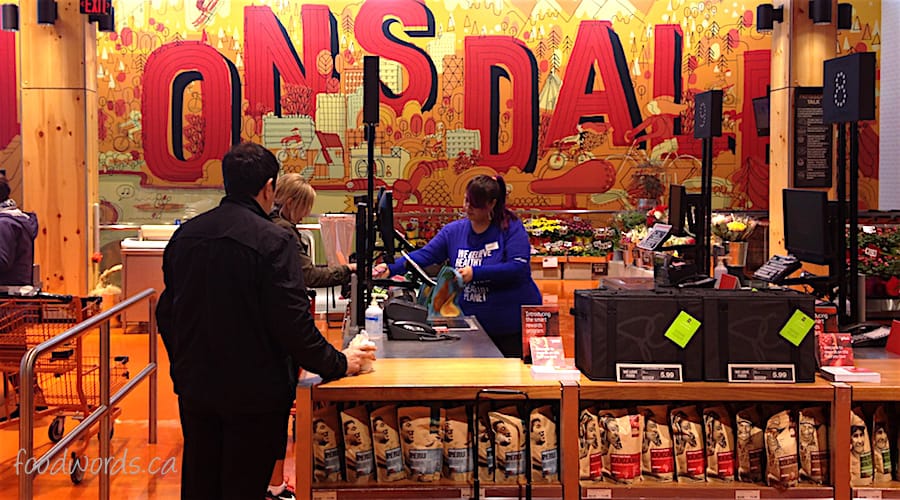Think about this – really think about it: The grocery store is one of the few retail outlets where the staff don’t have to know about what they sell. This would never happen in Best Buy or Victoria’s Secret where they actually know about voltage. Talk about a marketing stumble.
I know why it’s like this. The person pushing the cart is thinking about ingredients and cooking (often for people they love) but the people who sell the food are not. They are thinking about moving product – not food but product. This is a serious gap. What’s more, it’s a lost marketing opportunity for the grocery store.
Closing the knowledge gap could provide a competitive edge for traditional grocers. If staff thought about food, like their customers do (not the grumpy ones who regard grocery shopping as a chore), the grocery store would be a destination (even for the grump who needs/wants help). Online shopping and big stores, which are essentially food depots, aren’t going to do this.
Grocery stores are not usually the place to get inspired about food. It’s one of those things that has always confused me. Why not? Farmers markets and gourmet food shops create desire for their products. The staff know food and knowledge inspires. Inspiration leads to buying more. Ask Heinen’s or Waitrose, two grocery chains that inspire. They do a whole lot of everything else too, but they start by thinking of their products as ingredients.
Customers always have questions. Though we (I’m a customer, too) know not to bother asking them in a traditional grocery store. Why ask the difference between the two olive oils side by side on the shelf if we can’t get an answer? The help isn’t there to help us. Their main job is getting the product on the shelves so customers can buy it. Sure, they can show us where something is – if they know enough about food.
Last year I asked the kid stocking shelves where the canning jars were. He looked at me with a blank face. I searched in my brain to match his knowledge and ended up saying “you know, the empty jars.” He did know that and took me to the very spot. But my sister asked the guy in her grocery store where the cheesecloth was and he proudly took her to the cheese section.
Following a few steps behind like a good little dog is a customer experience. Just not the good kind.
Marketing – the old fashioned way
If staff were interested in food, a conversation could happen. Simple questions like, what are you making or who is it for, would go along way. Because, without fail, the customer will start talking about what they’re preparing. Kind of old fashioned, isn’t it? But that conversation would probably result in more sales, certainly a return trip (which is really more sales). This kind of conversation couldn’t happen with online grocery shopping, though many shoppers now choose this option because they can get product information while they’re on the computer.
That same conversation could be turned into a small story or photo or both for the store’s social media. Instead, grocers are missing another marketing opportunity – no customer recognition, no essential cross over from store to social. Limited reach.
What can a store manager do?
Hire food people. Even one food-interested staff member on the floor at peak shifts would be good (I’m not talking about chefs and nutritionists). Food-interested people – including ones who can lift heavy cases – exist in the millions (thank you food TV and food bloggers). We are in the age of extreme food awareness and food love.
One of the reasons people like Trader Joe’s is because the staff know about food (they also face and stock). They take pride in their knowledge. This kind of pride is goodwill. You already know goodwill can’t be bought. It’s also good for staff retention.
Reinvent yourself
Training staff with some food knowledge is inexpensive marketing. Separate from the biggies – who can implement expensive technology – unless being a food depot is a goal. There are many customers, millennials among them, who still want human contact and to engage with store employees who are well-supported and knowledgeable. I’m not alone in this thinking. Nikki Baird, digital retail guru, plain speaker, and writer for Forbes magazine, says so too. Maybe it’s time for the traditional grocery store to become a complete food resource.

